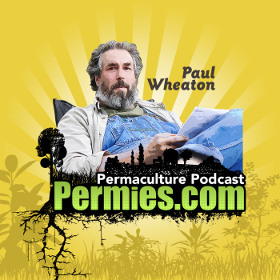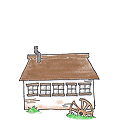 Listen Online
Listen Online  Download
Download  Get all of the podcasts in convenient, giant zip files
Get all of the podcasts in convenient, giant zip files  Subscribe on iTunes
Subscribe on iTunes Summary
Summary
Paul Wheaton and Heath Carrey continue their discussion on sewage treatment and poop beasts that started in podcast 223. They continue with their concerns on using the
wood from the poplar
project because of the pharmaceutical, the chemicals, and the heavy metals that could be present in the poop Kool-Aid.
Heath talks about what the poplar project site looked like before he started and describes the planting technique he used for the poplars. He says that after only 4 years, one can see that soil is starting to build. Paul points out that the project is very much a monocrop. Heath agrees and explains that he was able to convince the authorities to also plant few other species. He points out that many
volunteer species are starting to show up as well: elm, Russian olives,
rose bushes, etc.
They go on and try to predict what the site will look like in the future. Heath says that in 40 years or so the
canopy should start to close, which will change the composition of the ground cover. Paul predicts that after 120 years, heavy metals will have accumulated to a point where the trees cannot grow anymore.
Heath mentions that the current plan is to use the wood after about 12 years. Paul and him talk about a safer way to use the wood than making hard wood floors.
Heath talks about fungus breaking down chemicals and chelation methods for heavy metals.
They talk about all that is not known and the risk of screwing up the project because of the unknown unknowns.
Paul and Heath then talk about eliminating centralized poop treatment and the risk of some people screwing up the river by doing composting toilets wrong.
Relavent Threads
Podcast 076 -Creating an Oasis with Grey Water 1
Podcast 077 -Creating an Oasis with Grey Water 2
Podcast 149 - No Soap or Shampoo
Podcast 175 - Tree Bogs
Support the Empire
Help support the empire and get all of the podcasts in bundles
here










